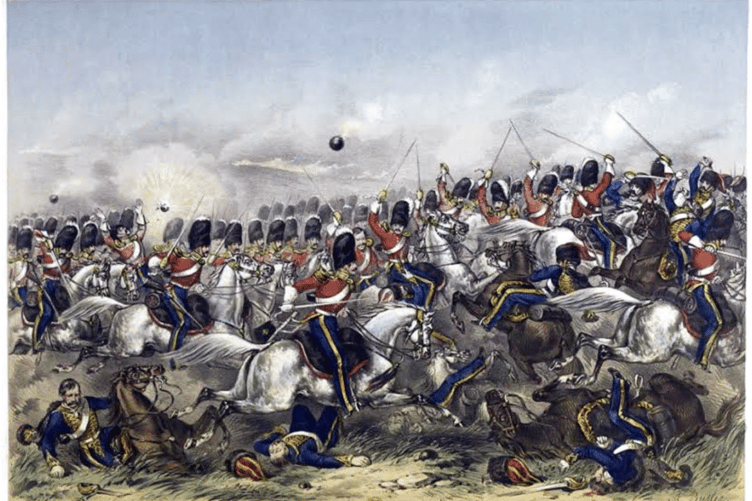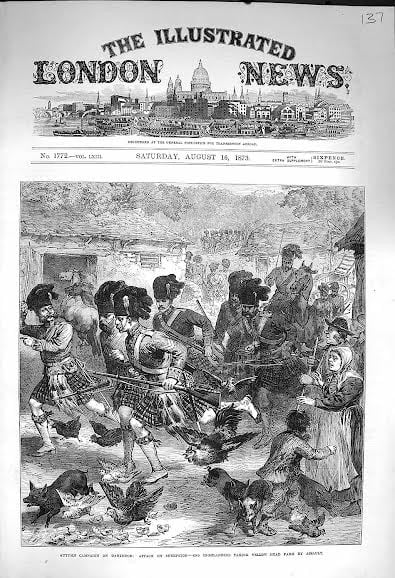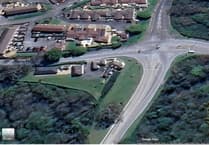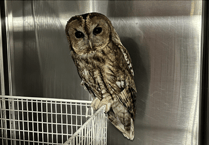DARTMOOR is a land often associated with quiet, empty wilderness. Where the world goes by with little of mention happening.
However, this autumn marks the 150 year anniversary of the most audatious military escapades and largest events to ever take place on the moor. Sheepstor Parish Councillor KEITH SCRIVENER chronicles: ‘When Sheepstor was invaded by the army.’
In 1873, for the first time, the Army was to engage in large-scale exercises of invasion, played out on the moors around Burrator and the River Meavy in the days before the valley was flooded to create a reservoir.
Early August that year saw around 12,000 soldiers, with 2,100 horses, of the Army’s First and Second Divisions, encamped on Ringmoor and Yennadon Downs above the villages of Sheepstor and Meavy to take part in six weeks of intense military exercises.
The principal aim of such a great muster was the effective Control and Provision of an immense force of fighting men - but the Officers and Control Staff at HQ base back in Plymouth could not control or provide for the coming weather.
Sadly, for all the careful military planning and organisation, the climate which hit these Autumn Army training tests brought the worst conditions that Dartmoor could offer - heavy rain, fogs, chill winds, mud, and boggy ground underfoot. It was reported to have rained solidly from August 8th for six weeks.
Formation training with ‘attacks, defence and skirmishes’ was the pre-prepared plan, to be played out on a wide area of moorland on treacherous terrain from Eylesbarrow to Roborough Down onwards to Princetown and Tavistock.
There were to be innovations and new techniques put to the test for the infantry, artillery and cavalry men. It was the first time that blank cartridges had been trialled by the Army.
All this was confounded by the conditions that prevailed during the inclement downpours, which meant for long periods little activity took place. Men sheltered from it all, starved waiting for meals which were difficult to cook, equipment became dirty and hard to clean, uniforms were never dry, horses shivered and wanted for fodder, mud clung to everything and morale was at rock bottom.
The forces gathered included famous regiments, among which were Scottish Highlanders and Guards Cavalry.
The British Army of this time was learning lessons from the muddle and chaos of the Crimean War, particularly in its supply and logistics systems, which had broken down so fatefully in that campaign against the Russian Army 20 years earlier in 1854.
Supplies for the 1873 camps were sent up from Plymouth to Yennadon and Princetown on the Dartmoor granite horse-drawn tramway. Local farmers and suppliers were hired to help transportation of goods with their own horses and carts.
A newspaper report in the Western Morning News from the time told how soldiers were marched out from Plymouth and Tavistock under a ‘tropical summer sun’ which blazed down on the redcoats - many of them falling out in the heat, with a few dying from sunstroke. Military hospitals in Plymouth and at the camps began to fill up with exhausted men.
But not long after the two divisions had settled into their camps the rain began to fall in torrents and a bitter gale pounded the thin soggy canvas tents.
It was reported: ‘Short of rations, short of fodder, and unable to kindle fires on the wet spongy peat, old campaigners might well have imagined themselves back on the heights of Sebastopol in the Crimea.’
The troops taking part on the dreary western slopes of Dartmoor consisted of Regulars, Militia, and Volunteer units, plus two contingents of Royal Marines one from Plymouth and one from Portsmouth.
One of the most exalted ranking regiments engaged was The Royal Scots Dragoon Guards - ‘The Greys’ - sent to the Dartmoor excursions to practice cavalry techniques on a difficult landscape.
The Greys had a famous history. The took part in the charge of The Heavy Brigade at the Battle of Balaclava in October 1854. At the Battle of Waterloo in 1815 they had been notable in capturing the wooden ‘eagle’ standard of the French 45th In- fantry and were described by Napoleon Bonaparte as ‘Those terrible grey horses’ after the French Emperor witnessed their attack against his forces.

On Dartmoor, it was the weeks of rain and terrible weather that was the greatest obstacle to these renowned horsemen. The Greys’ officers were hit so hard by the rainclouds and storms of 1873 that they struck an unofficial silver medal for themselves, a form of ironic ‘joke’, to acknowledge the awful hardships they endured on the soaked despairing downs of Dartmoor.
The medal carried six clasps or bars denoting the place names where they survived these awful hardships of ‘warfare’ - Cadover Bridge, Ringmoor, Roborough, Black Tor and Princetown were recorded as the ‘battlefields’ of despair.
Supporting the Dragoon Guards on Dartmoor were the 42nd Scottish Highlanders. One particular exercise involving these kilted Scotsmen was confused so badly by mist and fog that a Company of Highlanders became lost above Sheepstor village. Disorientated, they wrongly charged downhill through the sleepy cottage yard and barns of Yellowmead Farm imposing terror upon farmer Thomas Stanbury and his wife.
The media of the day took an interest in the camp and the large-scale operations and sent sketch artists and reporters out to record the events. The Illustrated London News reported weekly accounts and captured the unfortunate invasion at Sheepstor with an entire Front Page picture in its edition of Saturday August 16. The mishaps performed during these large-scale operations were also accompanied by tragedy. Civilians and soldiers lost lives.
The great scenes of the manoeuvres were a big attraction to local people, with crowds of visitors coming out from Plymouth and elsewhere in horse-drawn trams and carriages to witness the ‘parades and drill’ taking place across the moor.
Unfortunately one spectator on horseback died after he took a tumble and fell from his ride onto rocks. A soldier drowned on the moor and was buried at Meavy.
Another tragedy took the life of Deputy Quartermaster General, Colonel Mackenzie. He and another man were travelling in a gig when they attempted to cross a ford on the river Meavy near Gratton Farm. The current was far too strong and the gig turned over mid-stream, both men made it back to the bank but the Colonel died from the shock of it all.
The atrocious conditions finally resulted in the manoeuvres being called off early, but not before they were visited by the then Prince of Wales and the Duke of Edinburgh, such was deemed the importance of the occasion.
Lessons were learned on these treacherous training grounds, and carried forward by the soldiers and their officers who went on to fight a few years later in the Zulu wars of 1879 and in the South African Boer War of 1899.
The military still train on Dartmoor today with three firing ranges, at Okehampton, Merrivale and Willsworthy and dry training with blanks at Gutter Tor and Ringmoor. In more modern times, Dartmoor provided the perfect training conditions for the men who ‘yomped’ and fought so bravely in The Falklands War of 1982.
Today at Yellowmead Farm, the scene of the unfortunate Scottish invasion 150 years ago, Sheepstor farmer Roy Radmore keeps animals on the land. He believes the mighty manoeuvres of 1873 should be commemorated on this anniversary. ‘They must have been a fantastic sight to see. The camp on Yennadon was on the slopes above Hernspitt farm in Meavy where my father farmed and where I grew up,” he said.





Comments
This article has no comments yet. Be the first to leave a comment.